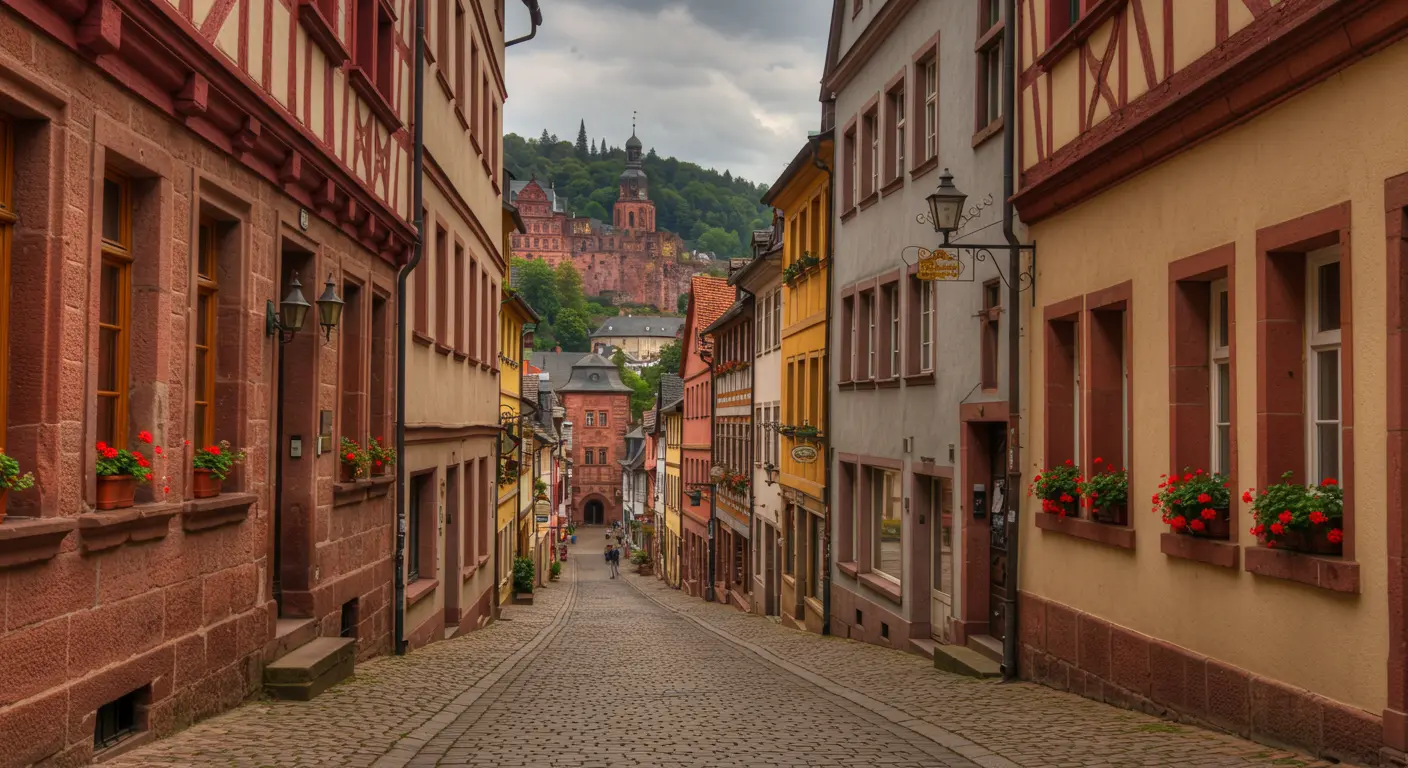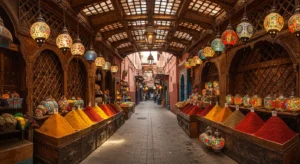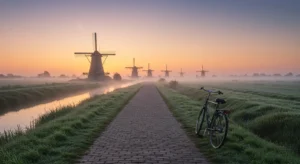Table of Contents
Your First Germany Vacation: A Beginner’s Guide to Unforgettable Adventures
So, you’re thinking about a Germany vacation. Your mind might be buzzing with images: fairy-tale castles perched on misty hills, the electric energy of Berlin’s nightlife, or the simple joy of a hearty meal in a cozy beer garden. But then, a little bit of anxiety creeps in. Where do you even start? With 16 diverse states, a language that feels formidable, and a history that’s woven into every cobblestone street, planning a trip can feel overwhelming.
I remember that feeling. My first time planning a Germany trip, I spent hours jumping between guidebooks and a dozen open browser tabs, unsure how to piece it all together.
Well, take a deep breath. You’ve come to the right place. This guide is designed to be the friendly, clear starting point I wish I’d had. We’ll walk through everything—from when to go and where to focus your energy to how to ride the train without a hitch. Forget the stress; let’s turn those dreamy images into your next incredible adventure.
Why Germany? More Than Just Beer and Cars
Sure, Germany is the birthplace of the automobile and a global beer-brewing champion. But a vacation here is so much more. It’s a country of staggering contrasts. You can stand in the shadow of a Roman-era gate in Trier, Germany’s oldest city, and a few hours later, be marveling at the futuristic architecture of Frankfurt. It’s a place where deep, quiet forests like the Black Forest exist just a short train ride from the pulsing, artistic heart of cities like Hamburg or Leipzig.
For the first-time visitor, Germany is also wonderfully manageable. Its infrastructure is top-notch—trains are (usually) punctual, roads are excellent, and English is widely spoken in tourist areas. This makes it an ideal destination for beginners to European travel who want a blend of familiar comforts and exciting new experiences.
First Things First: When Should You Plan Your Trip?
Timing is everything, and Germany has a distinct personality in every season. There’s no single “best” time, but there’s definitely a best time for you.
- Spring (April – June): This is a gorgeous time to visit. The crowds are thinner than in summer, the temperatures are mild, and the entire country bursts into bloom. It’s perfect for long walks through cities and the beginning of outdoor café season. A word of caution: the weather can be unpredictable, so pack layers!
- Summer (July – August): This is peak season. The weather is generally warm and sunny, ideal for Rhine River cruises, hiking in the Alps, and attending the many fantastic open-air festivals. The downside? Everyone else has the same idea. You’ll face bigger crowds and higher prices for flights and accommodation.
- Fall (September – October): My personal favorite. The summer crowds dissipate, the weather remains pleasant, and the forests transform into a breathtaking canvas of red, orange, and gold. This is also the time for Oktoberfest (which actually starts in late September) and countless wine festivals in regions like the Mosel Valley.
- Winter (November – March): If you dream of a storybook Christmas, this is your season. Germany’s Christmas markets (Weihnachtsmärkte) are magical, filling town squares with the scent of mulled wine and gingerbread. Outside the holiday period, days are short and cold, but it’s a great time for museum-hopping and experiencing Germany’s cozy Gemütlichkeit.
Crafting Your Germany Itinerary: A Realistic Approach
Trying to see “all of Germany” in one trip is a recipe for exhaustion. It’s better to pick a region or a couple of key cities and explore them properly. Here are two classic itineraries for a 10-14 day Germany vacation.
Option 1: The Classic First-Timer Route (History & Scenic Beauty)
This route gives you a fantastic overview of Bavaria and the southwest, packed with iconic sights.
- Days 1-3: Munich. Start in the sophisticated yet relaxed capital of Bavaria. Explore Marienplatz, visit the opulent Nymphenburg Palace, and spend an afternoon in the English Garden. No trip is complete without a visit to a traditional beer hall like the Hofbräuhaus.
- Day Trip: Neuschwanstein Castle. Take a train to Füssen and step into a real-life fairy tale. This is the castle that inspired Disney’s Sleeping Beauty castle. Pro tip: Book your tickets weeks in advance.
- Days 4-5: The Romantic Road. Rent a car or take a bus tour along this famous route, stopping in charming medieval towns like Rothenburg ob der Tauber. Walking its cobbled streets feels like traveling back in time.
- Days 6-7: Heidelberg. Home to Germany’s oldest university and a magnificent ruined castle overlooking the Neckar River, Heidelberg is impossibly romantic.
- Days 8-9: The Rhine Valley. Base yourself in a town like Bacharach or Rüdesheim. Here, you’ll take a scenic boat cruise past hillsides covered in vineyards and dotted with over 40 castles.
Option 2: The Urban & Cultural Explorer (History & Modernity)
This itinerary is perfect if you’re drawn to vibrant city life and profound historical sites.
- Days 1-4: Berlin. You could spend a week here and not see it all. Dive into its complex history at the Brandenburg Gate, the Reichstag Building, and the East Side Gallery. Berlin’s art scene and nightlife are legendary. It’s a city that’s constantly reinventing itself.
- Days 5-6: Dresden. A short train ride south, Dresden is known as the “Florence on the Elbe.” Its beautifully reconstructed historic center, like the Zwinger Palace and the Frauenkirche, is a testament to resilience after WWII.
- Days 7-8: Nuremberg. This city is a fascinating study in contrasts. Explore its medieval old town and the sprawling Imperial Castle, but also confront history at the Nazi Party Rally Grounds documentation center.
- Days 9-10: Frankfurt. Often just a transit hub, Frankfurt deserves a closer look. Its stunning skyline earns it the nickname “Mainhattan,” but its rebuilt Altstadt (old town) with the Römer square offers a traditional German experience.
Getting Around: The Joy of the Deutsche Bahn
One of the biggest worries for beginners is transportation. Let me put you at ease: Germany’s rail system, operated by Deutsche Bahn (DB), is your best friend.
- The DB Navigator App: Download this before you go. It’s a lifesaver. You can look up schedules, book tickets, and get real-time platform updates. It even works offline once you’ve loaded your journey.
- Ticket Types: For long-distance travel (ICE trains), booking in advance online or via the app gets you significant discounts with “Sparpreis” tickets. For regional travel, look into day passes like the Deutschland-Ticket or regional Länder-Tickets if you’re traveling in a group, as they offer unlimited travel for a flat fee.
- A Quick Story: On my last trip, a sudden delay threatened a tight connection. The DB app immediately notified me with an alternative route and platform, saving me a huge headache. The system is designed to help you, even when things don’t go perfectly to plan.
For more detailed planning, the official German National Tourist Board website is an authoritative and trustworthy resource for current events and travel tips.
A Taste of Germany: Beyond Bratwurst
You can’t talk about a German vacation without mentioning the food. While yes, you must try a perfectly grilled bratwurst from a street vendor, the culinary scene is wonderfully diverse.
Each region has its specialties. In Bavaria, it’s all about Weißwurst (white sausage) with sweet mustard and giant, doughy Schweinshaxe (pork knuckle). Head to Cologne, and you’ll be served Himmel un Ääd (Heaven and Earth)—a dish of black pudding, applesauce, and mashed potatoes. In the south, don’t miss Maultaschen, a type of large meat-filled pasta pouch. And please, leave room for cake (Kuchen). German bakeries are a daily delight.
FAQs: Your Germany Vacation Questions, Answered
Q: Do I need to speak German?
A: Not at all for the major tourist trail. In cities and popular areas, English is widely spoken in hotels, restaurants, and tourist attractions. However, learning a few basic phrases like “Guten Tag” (Good day), “Danke” (Thank you), and “Bitte” (Please/You’re welcome) will be greatly appreciated and go a long way.
Q: Is it a budget-friendly destination?
A: Germany is more affordable than many of its Western European neighbors like France or Scandinavia. While major cities like Munich and Frankfurt can be pricey, you can manage costs by using regional train passes, eating at casual eateries, and staying in guesthouses or well-located hostels. Museum passes can also offer great value.
Q: What’s the deal with cash vs. card?
A: This is important! Germany has traditionally been a cash-heavy society. While credit and debit card acceptance is growing, especially in cities, you will still find many smaller restaurants, shops, and even some hotels that only accept cash (EC cards are more common than Visa/Mastercard in some spots). Always carry some Euros with you to be safe.
Q: How should I pack?
A: The key word is layers. German weather can change quickly. Even in summer, a light rain jacket and a sweater are wise. Most importantly, bring comfortable walking shoes. You’ll be spending a lot of time on your feet exploring cobblestone streets.
Your Adventure Awaits
Planning your first Germany vacation might seem like a big task, but it’s one of the most rewarding trips you’ll ever take. It’s a country that offers a perfect blend of profound history, stunning natural beauty, and vibrant modern culture. Remember, you don’t have to see it all. Pick a region that calls to you, master the DB app, pack your most comfortable shoes, and go in with an open mind.
The memories you’ll make—whether it’s sharing a laugh with new friends in a beer garden, standing in awe of a centuries-old cathedral, or simply getting delightfully lost on a quiet side street—are what will truly define your German adventure.
So, what are you waiting for? Start mapping out your dream trip today. Gute Reise! (Have a good trip)
For more detailed planning, the official German National Tourist Board website is an authoritative and trustworthy resource for current events and travel tips.




